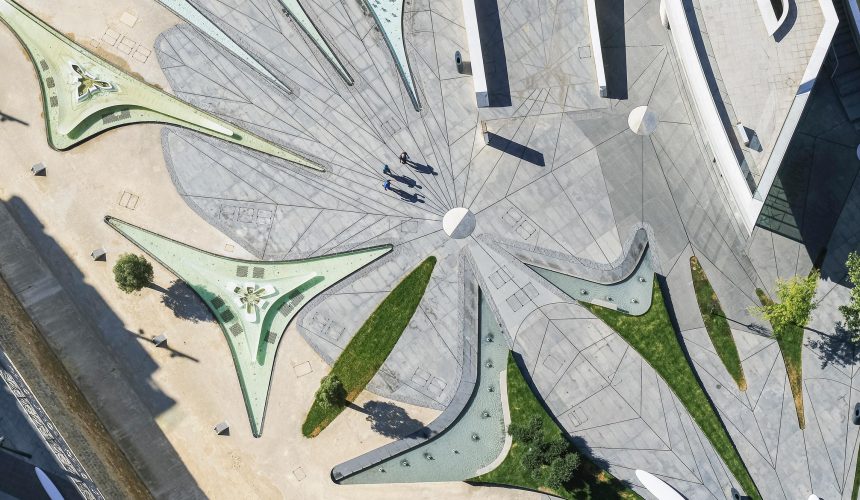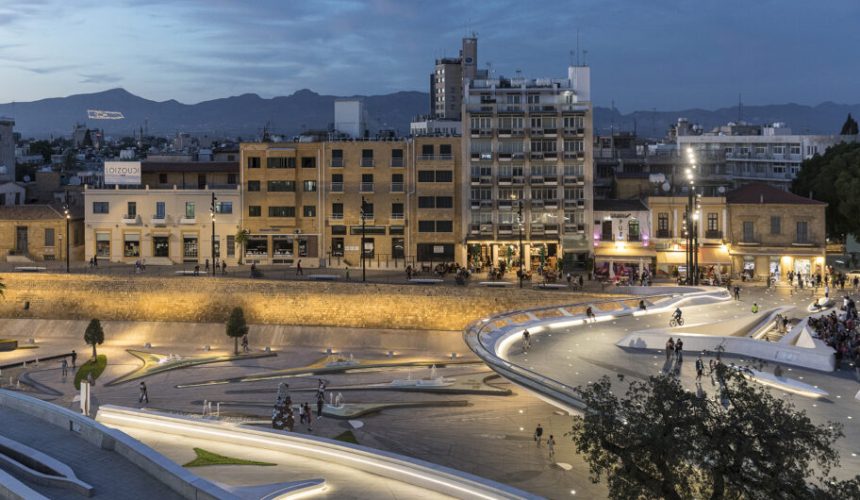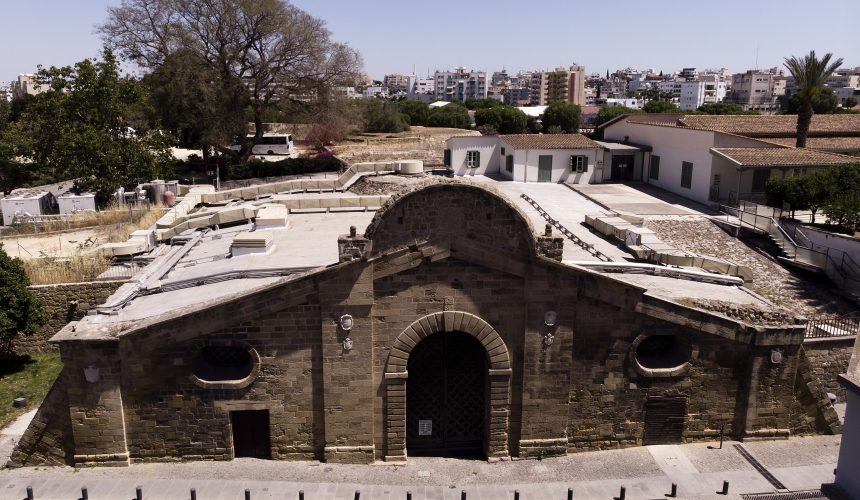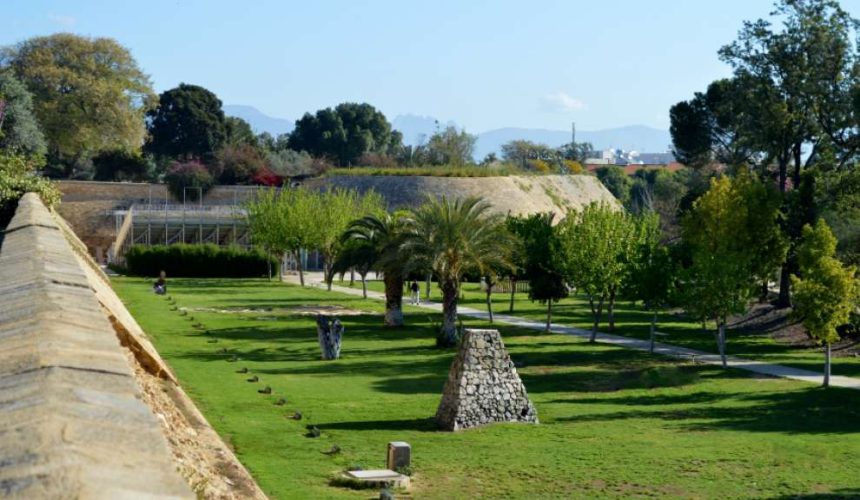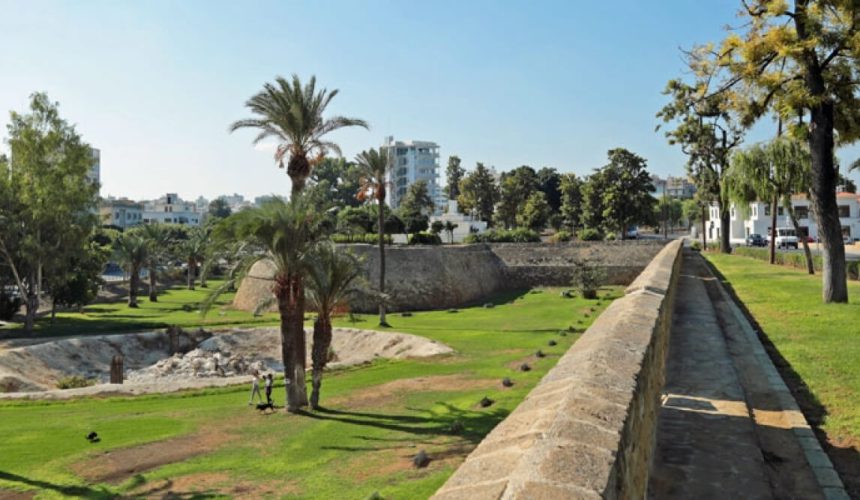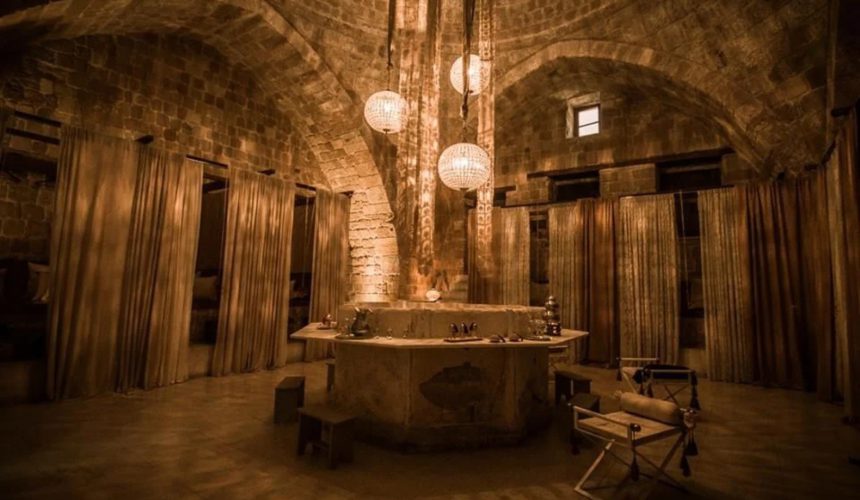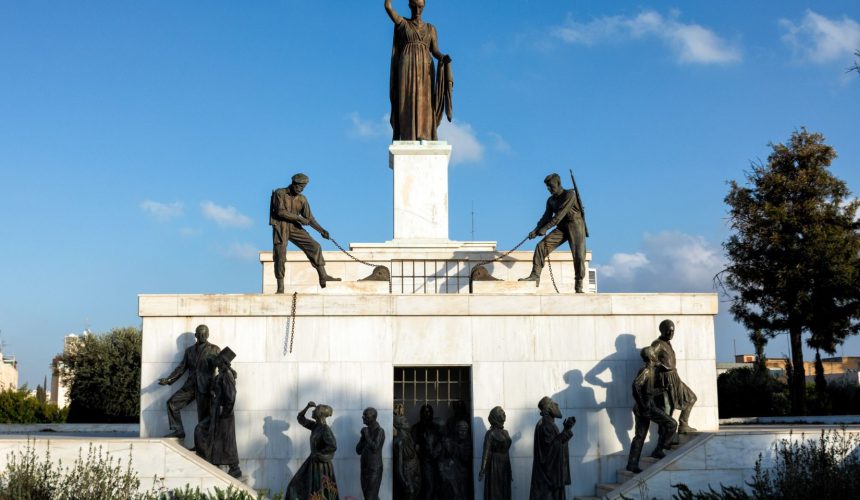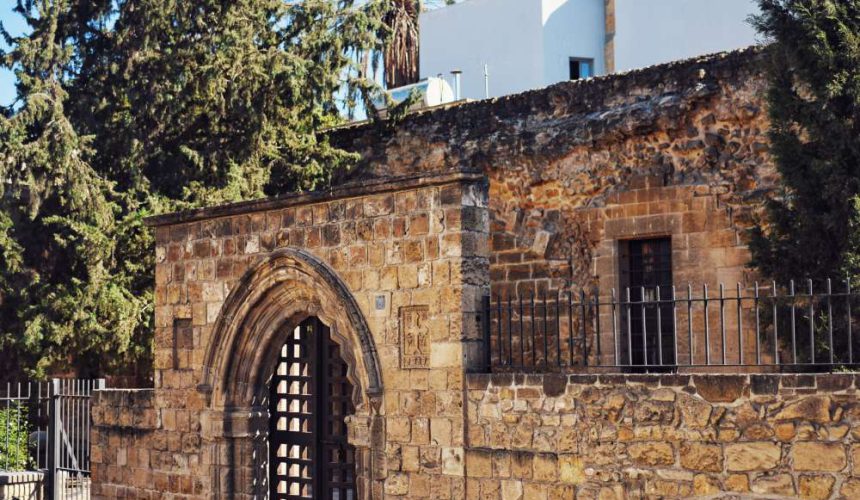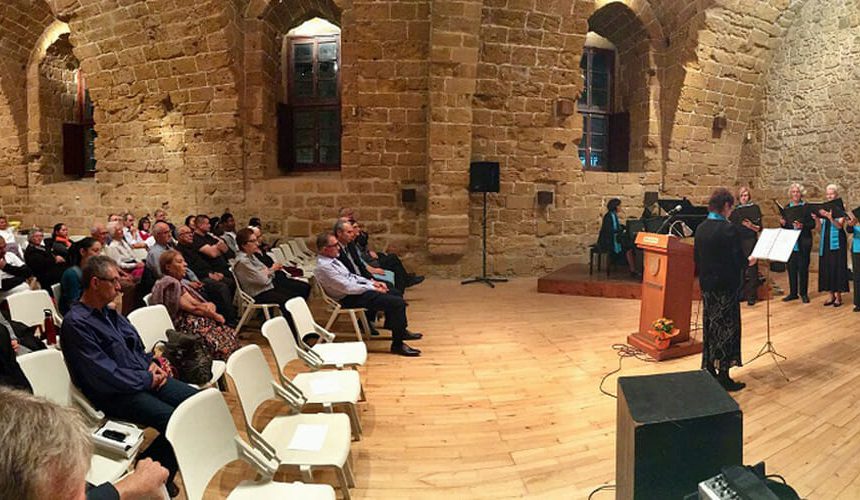Explore the city
Nicosia’s Timeless Treasure
Nestled within the heart of the walled city of Nicosia, Cyprus, lies a hidden gem that transcends time—Laiki Geitonia (Greek: Λαϊκή Γειτονιά). This enchanting neighborhood, whose name translates to “Popular Neighborhood” in English, is a living testament to the island’s rich history, tradition, and culture.
Historical Tapestry:
Laiki Geitonia’s story begins centuries ago, tracing its roots to the Roman period when it was known as “Stretta.” However, it truly flourished during the medieval era when it became a bustling center of commerce and craftsmanship. The buildings that now grace its narrow, winding streets date back to the late 18th century, constructed from a harmonious blend of wood, sandstone, and mudbrick.
Architectural Heritage:
The architectural charm of Laiki Geitonia lies in its preservation of traditional Cypriot urban architecture. The buildings are adorned with intricate wooden balconies, colorful shutters, and charming courtyards. Each corner exudes an old-world charm that beckons visitors to explore further.
A Pedestrian Oasis:
Laiki Geitonia is a pedestrian’s paradise, where cars are not allowed to disrupt the serene atmosphere. As you wander its labyrinthine streets, you’ll find yourself transported to a bygone era. The absence of modern vehicles allows for a tranquil and immersive experience.
Craftsmanship and Souvenirs:
One of the highlights of Laiki Geitonia is its vibrant artisan scene. The neighborhood is home to numerous craft shops, boutiques, and souvenir stores. Here, you can discover exquisite handmade goods, from pottery and textiles to traditional Cypriot lace and jewelry. It’s an ideal place to pick up unique souvenirs that capture the essence of Cyprus.
Tavernas and Cafés:
Amidst the cobblestone streets, you’ll find a plethora of charming tavernas and cafés offering authentic Cypriot cuisine. It’s an opportunity to savor traditional dishes, like souvlaki, moussaka, and halloumi, in a cozy and inviting setting. As you dine, you might even be serenaded by live folk music, adding to the neighborhood’s enchanting ambiance.
Cultural Events:
Laiki Geitonia is not just a place frozen in time; it’s a living, breathing part of Nicosia’s cultural scene. Throughout the year, the neighborhood hosts various cultural events, including art exhibitions, music festivals, and traditional performances. These events bring the streets alive with a vibrant energy that captivates both locals and tourists.
A Timeless Experience:
Stepping into Laiki Geitonia is like stepping into a living museum. The neighborhood’s authenticity and historical significance have earned it recognition and protection as a cultural heritage site. It’s a place where the past seamlessly coexists with the present, offering a glimpse into Cyprus’ rich and diverse cultural tapestry.
Laiki Geitonia is a place where time stands still, where the essence of Cyprus’ history and culture is carefully preserved. It’s a neighborhood that beckons travelers to wander its timeless streets, discover its hidden treasures, and immerse themselves in a bygone era. A visit to Laiki Geitonia is not just a journey through history; it’s a journey into the heart and soul of Cyprus itself.
Eleftheria Square (Greek: Πλατεία Ελευθερίας; Turkish: Eleftheria Meydanı, Özgürlük Meydanı) is a paramount urban space located at the heart of Nicosia, the captivating capital city of Cyprus nestled in the European region. Aptly translating to “Liberty Square,” this iconic plaza serves as a vibrant nexus, elegantly uniting the thoroughfares of Ledra and Onasagorou streets with the intersecting Stasinou, Omirou, Kostaki Pantelidi, Konstandinou Palaiologou, and Evagorou avenues.
With its strategic positioning at the crossroads of these bustling arteries, Eleftheria Square stands as an emblem of civic connectivity and the city’s dynamic pulse. In an architecturally significant accolade, the square finds itself among Zaha Hadid’s esteemed “Top 35 projects,” a testament to its global recognition and enduring influence.
Eleftheria Square transcends its utilitarian role to become a cultural and social hub, where the vibrancy of daily life converges with the city’s historical significance. This intersection is a living canvas, depicting the passage of time, the aspirations of the community, and the timeless values encapsulated by its name. Amid the captivating architecture and vibrant energy, Eleftheria Square stands as a testament to the enduring spirit of liberty and unity, and as an integral cornerstone of Nicosia’s unique urban fabric.
Exclusively pedestrian, Ledra and Onasagorou streets form a bustling shopping corridor at the heart of Nicosia. Brimming with a diverse array of shops, these streets guide visitors to the vibrant core of the old city. Here, winding alleys reveal boutiques and cafes that add to the lively atmosphere.
Ledra Street, an ancient thoroughfare tracing its origins back thousands of years, stands on the very grounds where the Romans constructed their fortress—now the nucleus of the old city. The name ‘Ledra’ finds its roots in the settlement of the Hellenistic kingdom of the same name. It was the Romans who reshaped the city, creating the foundational grid of Nicosia’s historic center. ‘Makrydromos,’ an alternate name for the street, denotes its lengthy path, connecting the city to the ancient Hellenistic Kingdom of ‘Curium’ situated west of Limassol.
Ledra Street (Greek: Οδός Λήδρας) and Onasagorou Street (Greek: Οδός Ονασαγόρου) begin at the southern entrance of the old city, Eleftheria Square. Converging with Kyrenia Street, they extend as a continuous thoroughfare all the way to the northern entryway of the historic center, Kyrenia Gate. The name of the street pays homage to the ancient city-kingdom of Ledra, etching the city’s history into its vibrant lanes.
Nicosia’s Modern Commercial Boulevard
In the heart of Nicosia, Cyprus, Archbishop Makarios III Avenue stands as a testament to the city’s commitment to progress and modernization. This bustling thoroughfare has recently undergone a significant reconstruction, transforming it into a contemporary commercial boulevard that beautifully balances commerce, culture, and convenience.
Avenue of Progress:
Named after the first President of Cyprus, Archbishop Makarios III Avenue has witnessed the evolution of Nicosia over the years. Its recent reconstruction is a reflection of the city’s dedication to embracing the future while preserving its rich heritage.
Modern Marvel:
The reconstruction of the avenue has brought a modern touch to Nicosia’s landscape. Its wide boulevards, thoughtfully landscaped green spaces, and sleek architectural designs create a visually striking environment that captivates both residents and visitors.
Commercial Hub:
Archbishop Makarios III Avenue has emerged as Nicosia’s primary commercial hub. It is home to an array of shops, boutiques, and department stores, offering a diverse range of products from fashion and electronics to local crafts and souvenirs. Whether you’re a shopaholic or simply seeking to explore the local shopping scene, this avenue has something for everyone.
Cultural Showcase:
Beyond its commercial significance, the avenue serves as a cultural showcase. It frequently hosts art exhibitions, cultural events, and street performances that highlight Cyprus’ rich heritage and artistic talent. These cultural endeavors enrich the avenue’s character, offering a multi-dimensional experience to those who traverse its paths.
Dining Delights:
As the sun sets over Nicosia, Archbishop Makarios III Avenue comes alive with a vibrant dining scene. The avenue boasts a wide range of restaurants, cafes, and eateries, serving cuisines from around the world. Whether you’re in the mood for international flavors or traditional Cypriot dishes, you’ll find a culinary delight to satisfy your palate.
Accessibility and Convenience:
The recent reconstruction of the avenue has not only enhanced its aesthetics but also improved accessibility and convenience. Wider sidewalks, designated pedestrian zones, and well-planned traffic management make it a comfortable place to explore on foot.
Modern Landmarks:
Archbishop Makarios III Avenue is also home to several modern landmarks. The sleek and contemporary architecture of its buildings, along with iconic structures like the Eleftheria Square and the Hadjidemetriou Theater, adds to its distinctive charm.
A Glimpse of the Future:
As you traverse Archbishop Makarios III Avenue, you’ll get a glimpse of Nicosia’s future. The avenue represents the city’s determination to embrace progress while preserving its identity. It’s a place where modernity and tradition coexist harmoniously, creating an inviting environment for all who visit.
Located in the heart of Nicosia, the capital city of Cyprus, the Archdiocese stands as a profound testament to the island’s rich spiritual and cultural heritage. With its strategic position near the city center, this revered institution is easily accessible to both locals and visitors seeking a connection to the island’s history and faith.
The Archdiocese holds a significant place as the spiritual epicenter of Cyprus. Its architectural elegance, characterized by a blend of Byzantine and Gothic influences, speaks to centuries of devotion and the enduring role that faith has played in shaping the island’s identity.
Beyond its architectural splendor, the Archdiocese serves as a vibrant hub for both religious and cultural activities. It hosts a variety of events, including religious services, cultural exhibitions, and lectures, that bring people together to celebrate their shared values and heritage.
The significance of the Archdiocese extends far beyond its physical presence. It embodies the unity of faith and culture that defines Cyprus, drawing both locals and tourists to experience its serene atmosphere and historical resonance. It stands as a beacon of spiritual solace and a reminder of the enduring traditions that continue to shape the island’s soul.
In the heart of Nicosia, the Archdiocese is more than a religious institution; it’s a living testament to the interwoven threads of faith, history, and culture that make Cyprus a unique and cherished destination. It invites all who enter its hallowed halls to connect with the island’s legacy and find inspiration within its sacred embrace.
Famagusta Gate, an iconic historical landmark nestled within the captivating city of Nicosia, Cyprus, stands as both a testament to the island’s storied past and a gateway to its vibrant present. This awe-inspiring structure, located in the heart of the capital, holds a unique place in the narrative of Cypriot history.
Constructed during the Venetian period in the late 16th century, Famagusta Gate was originally intended to serve as one of the fortified entrances to the walled city of Nicosia. Its strategic location facilitated the city’s defense while also providing a portal for commerce and cultural exchange. The gate’s grandeur is a testament to the craftsmanship of the time, with its imposing stone arch and intricate architectural details that showcase a blend of Venetian and Ottoman influences.
As the centuries unfolded, Famagusta Gate witnessed the ebb and flow of history. It saw the rise and fall of empires, the passing of traders and travelers, and the bustling activity that defined the city’s daily life. Today, this historical gem stands as a preserved piece of Nicosia’s heritage, a tangible link between the past and the present.
Beyond its historical significance, Famagusta Gate has evolved into a vibrant cultural hub. The surrounding area hosts events, festivals, and exhibitions that celebrate the island’s rich cultural tapestry. The gate’s interior has been transformed into a cultural center, housing exhibitions that delve into Cyprus’ history and artistic expressions. It serves as a place of dialogue, where the threads of history and contemporary creativity intertwine.
Famagusta Gate is not just a structure; it’s a living embodiment of the island’s resilience, adaptability, and enduring spirit. As visitors pass through its archway, they are transported back in time while simultaneously stepping into the bustling energy of modern Nicosia. The gate’s continued relevance as a cultural beacon is a tribute to the island’s commitment to preserving its heritage while embracing progress.
In the heart of Nicosia, Famagusta Gate stands as an eloquent reminder of the power of architecture to shape history and inspire generations. It invites us to explore the layers of Cyprus’ story, to appreciate the fusion of influences that have shaped its identity, and to experience the harmony of past and present within its formidable walls.
The Medieval Walls of Nicosia, a remarkable testament to the city’s rich history and strategic importance, envelop the heart of the Cypriot capital in an embrace of centuries-old stone. These awe-inspiring fortifications, dating back to the Venetian period in the 16th century, stand as an enduring testament to the resilience, architectural prowess, and strategic acumen of generations past.
Spanning approximately four and a half kilometers, the walls encircle the old city of Nicosia, creating a living testament to the city’s historical evolution and the ever-changing tides of political and cultural influences. The fortifications were originally erected to protect the city from external threats, and their construction reflects the prevailing architectural styles of their time. Over the centuries, they have witnessed the rise and fall of empires, the progression of technology, and the ebb and flow of countless lives.
The walls are punctuated by eleven bastions, each with its own unique design and history. These bastions served as defensive strongholds, offering vantage points for the city’s defenders and a formidable deterrent to potential invaders. Some bastions still bear the scars of conflict, a poignant reminder of the tumultuous history these walls have borne witness to.
Beyond their defensive function, the walls of Nicosia are a living heritage that reverberates through the city’s daily life. They define the city’s character, serving as a canvas for artistic expression, a backdrop for local markets and festivals, and a testament to the island’s continuity in the face of change.
The gates that punctuate the walls, such as the iconic Famagusta Gate and Kyrenia Gate, stand as portals to the past, bridging history and contemporary life. They are not mere architectural elements; they are thresholds through which one can traverse time and experience the legacy of the city’s forebears.
Preservation efforts and restoration projects have ensured that these medieval walls remain a cherished treasure, allowing modern visitors to walk in the footsteps of those who once defended and inhabited this city. Today, they serve as a powerful reminder of the enduring nature of human ingenuity and the role of architecture in shaping the identity of a place.
The Medieval Walls of Nicosia stand as guardians of history, sentinels of memory, and a symbol of the city’s indomitable spirit. Their imposing grandeur invites us to reflect on the passage of time, the lessons of history, and the interconnectedness of generations in a world that is ever-changing yet anchored by the monumental echoes of its past.
Omeriye Hamam, an exquisite relic from the past nestled within the heart of Nicosia, Cyprus, is a living testament to the island’s diverse history and the enduring beauty of Ottoman architecture. This historic bathhouse, dating back to the 16th century, serves as a tangible link to a bygone era, inviting visitors to step back in time and immerse themselves in the rich cultural tapestry of the region.
Stepping into Omeriye Hamam is akin to traversing a portal to another era. The architecture is a harmonious blend of Ottoman design and the local influences that have shaped Cyprus’ identity over the centuries. The hamam’s meticulous construction showcases the architectural brilliance of its time, with intricate detailing, stunning domes, and decorative elements that hint at the opulence and attention to detail that were characteristic of the Ottoman Empire.
The hamam’s layout reflects its dual purpose as a space for both physical cleansing and communal interaction. The meticulously crafted marble interiors, adorned with geometric patterns and ornate calligraphy, create an ambiance of elegance and serenity. The central domed chamber, with its warm and inviting atmosphere, invites guests to unwind and partake in the tradition of bathing that has been cherished for generations.
Beyond its architectural splendor, Omeriye Hamam’s historical significance resonates deeply. The hamam has seen a kaleidoscope of stories unfold within its walls, from its inception as a hub of social interaction during the Ottoman period to its role as a cultural venue in modern times. Today, it serves as a bridge between history and contemporary life, hosting cultural events, exhibitions, and performances that celebrate the island’s vibrant heritage.
Omeriye Hamam’s legacy extends beyond its physical presence. It serves as a symbol of Cyprus’ cultural diversity, echoing the influence of successive civilizations that have left their mark on the island. It stands as a reminder of the importance of preserving architectural treasures that connect us to our shared human history and provide insights into the evolution of societies.
A visit to Omeriye Hamam is a journey of discovery, an opportunity to engage with the past while embracing the present. The hamam’s hallowed halls echo with the whispers of the past, inviting visitors to explore its chambers, soak in its history, and reflect on the enduring importance of preserving the cultural treasures that define our collective identity.
The Liberty Monument, a striking emblem of resilience and freedom, stands tall within the heart of Nicosia, Cyprus, as a poignant reminder of the island’s indomitable spirit and enduring pursuit of independence. This iconic monument is a visual representation of the struggles and triumphs that have shaped Cyprus’ history and identity.
Erected in 1973, the Liberty Monument serves as a commemoration of the fight for freedom and the sacrifices made by the people of Cyprus during the struggle for independence. Its strategic location near the city’s center positions it as a symbol that resonates with both locals and visitors, conveying the profound significance of unity and the unyielding quest for self-determination.
The monument’s design is a testament to the collaboration of artist Yiorgos Kotsonis and architect Christos Yiallourides. Its unique form, with its interwoven metal elements, represents the unity of the people in their pursuit of liberty. The monument’s dynamic structure captures the motion of freedom and stands as an enduring testament to the spirit of resistance that courses through the island’s veins.
Beyond its physical presence, the Liberty Monument holds a deep emotional resonance for the people of Cyprus. It serves as a gathering point for events, commemorations, and rallies that honor the struggles of the past and inspire future generations to safeguard the hard-won freedoms of the present.
The Liberty Monument’s location, nestled near Eleftheria Square, holds added significance. As a focal point of the city, it’s a constant reminder of the ideals that have shaped Cyprus’ modern identity and the imperative to uphold those ideals in the face of adversity.
The monument’s meaning extends beyond its initial construction. It has become a dynamic symbol of hope, resilience, and the unwavering commitment to liberty. It’s a place of reflection for those who seek to understand the island’s history and a rallying point for those who wish to engage in the ongoing dialogue about freedom, justice, and the shared values that bind the Cypriot community.
In the heart of Nicosia, the Liberty Monument stands as a beacon of courage, a tribute to the past, and an inspiration for the present and future. Its powerful silhouette against the sky reminds us that freedom is not just a concept but a legacy to be cherished, celebrated, and safeguarded for generations to come.
Nicosia, the capital city of Cyprus, is a place where history intertwines seamlessly with the contemporary. One of its most cherished historical gems is the Kastelliotissa Medieval Hall, a place that offers a captivating journey into the island’s rich and diverse past.
A Glimpse into History:
The Kastelliotissa Medieval Hall, also known as the Castle of Kastelliotissa or Castelliotissa, is an architectural marvel that dates back to the 16th century. Nestled within the Venetian Walls of Nicosia, it stands as a testament to the city’s medieval heritage.
Architectural Beauty:
The structure itself is a fine example of Venetian architecture, characterized by its sturdy stone walls, arched doorways, and intricate detailing. As you approach the hall, you’ll be struck by its imposing presence and the sense of history that seems to seep from every stone.
A Cultural Hub:
Throughout the centuries, the Kastelliotissa Medieval Hall has played various roles in the city’s life. It has served as a convent, a school, and even a military hospital during different periods of its existence. Today, it stands as a cultural center, drawing locals and tourists alike with its diverse range of events and exhibitions.
Exhibitions and Events:
The Kastelliotissa Medieval Hall frequently hosts art exhibitions, historical displays, and cultural events that celebrate Cyprus’ rich heritage. Visitors can immerse themselves in the island’s history, art, and culture as they explore the well-curated exhibitions.
A Tranquil Oasis:
The hall is situated within a peaceful courtyard, creating a serene oasis amidst the bustling streets of Nicosia. The tranquil surroundings offer a perfect setting for contemplation, relaxation, and appreciation of the historical significance of the place.
A Symbol of Resilience:
Over the centuries, the Kastelliotissa Medieval Hall has weathered wars, changes in rulership, and the passage of time. Its enduring presence stands as a symbol of Nicosia’s resilience and the enduring spirit of its people.
Visiting Kastelliotissa Medieval Hall:
If you’re planning to visit the Kastelliotissa Medieval Hall, be sure to check the local event calendar. You might have the opportunity to witness a captivating art exhibition, attend a cultural performance, or explore a historical display that sheds light on Cyprus’ fascinating history.
Whether you’re a history enthusiast, an art lover, or simply a traveler seeking a deeper connection with the places you visit, the Kastelliotissa Medieval Hall offers an enriching experience that will leave you with a profound appreciation for Nicosia’s past and present.
So, take a step back in time and embark on a journey of discovery at the Kastelliotissa Medieval Hall, where the echoes of centuries past still resonate in the present day.


